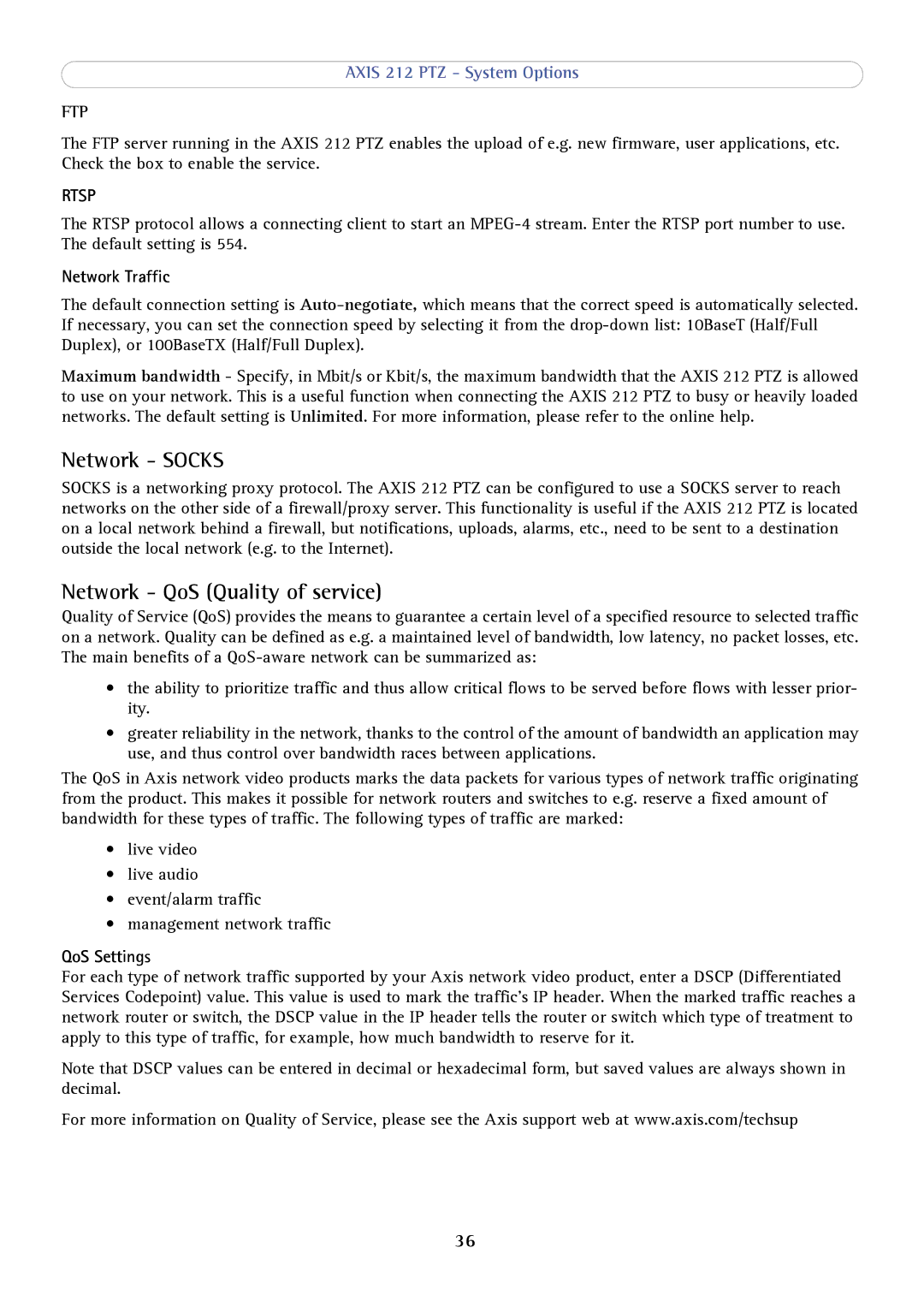AXIS 212 PTZ - System Options
FTP
The FTP server running in the AXIS 212 PTZ enables the upload of e.g. new firmware, user applications, etc. Check the box to enable the service.
RTSP
The RTSP protocol allows a connecting client to start an
Network Traffic
The default connection setting is
Maximum bandwidth - Specify, in Mbit/s or Kbit/s, the maximum bandwidth that the AXIS 212 PTZ is allowed to use on your network. This is a useful function when connecting the AXIS 212 PTZ to busy or heavily loaded networks. The default setting is Unlimited. For more information, please refer to the online help.
Network - SOCKS
SOCKS is a networking proxy protocol. The AXIS 212 PTZ can be configured to use a SOCKS server to reach networks on the other side of a firewall/proxy server. This functionality is useful if the AXIS 212 PTZ is located on a local network behind a firewall, but notifications, uploads, alarms, etc., need to be sent to a destination outside the local network (e.g. to the Internet).
Network - QoS (Quality of service)
Quality of Service (QoS) provides the means to guarantee a certain level of a specified resource to selected traffic on a network. Quality can be defined as e.g. a maintained level of bandwidth, low latency, no packet losses, etc. The main benefits of a
•the ability to prioritize traffic and thus allow critical flows to be served before flows with lesser prior- ity.
•greater reliability in the network, thanks to the control of the amount of bandwidth an application may use, and thus control over bandwidth races between applications.
The QoS in Axis network video products marks the data packets for various types of network traffic originating from the product. This makes it possible for network routers and switches to e.g. reserve a fixed amount of bandwidth for these types of traffic. The following types of traffic are marked:
•live video
•live audio
•event/alarm traffic
•management network traffic
QoS Settings
For each type of network traffic supported by your Axis network video product, enter a DSCP (Differentiated Services Codepoint) value. This value is used to mark the traffic’s IP header. When the marked traffic reaches a network router or switch, the DSCP value in the IP header tells the router or switch which type of treatment to apply to this type of traffic, for example, how much bandwidth to reserve for it.
Note that DSCP values can be entered in decimal or hexadecimal form, but saved values are always shown in decimal.
For more information on Quality of Service, please see the Axis support web at www.axis.com/techsup
36
